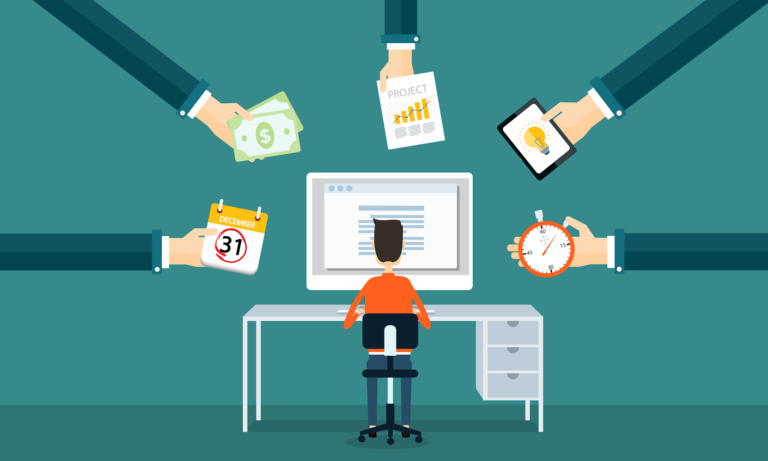10 Best freelancing websites in 2025

The nature of work is changing around the world, with more people engaging in freelance work. To service the demand, freelancing websites continue to grow by helping people to find work and make money.
Freelancing websites create a marketplace where workers and employers can find and engage each other.
The workers range from barely skilled to highly paid experts in numerous fields, while the employers also range from 1-man startups to multi-national corporations.
If you have got a skill that you can sell with the help of the Internet, then the following platforms can help you find the best employers.
Best freelancing websites
| Name | Best For | Website |
|---|---|---|
| Freelancer.com | All online jobs, largest | freelancer.com |
| Upwork | All online jobs, sleek design | upwork.com |
| Fiverr | All online jobs, easy to use | fiverr.com |
| Guru | Low fees, nice community | guru.com |
| People Per Hour | Easy to use, variety of tasks | peopleperhour.com |
| Toptal | Fortune 500 employers | toptal.com |
| 99Designs | Focus on creatives, flexible | 99designs.com |
| We Work Remotely | Top class employers | weworkremotely.com |
| Simply Hired | Easy to use, entry-level | simplyhired.com |
| ProBlogger Boards | Bloggers, good pay | problogger.com/jobs |
1. Freelancer.com
Formerly Getafreelancer.com, this platform is one of the oldest freelancing websites out there and it has the numbers to back it up.
At any given time, it can feature over 60,000 IT and computer jobs, 20,000 design and architecture jobs, plus thousands of data entry jobs, translations, business and HR, engineering jobs, and so on.
Finding jobs on the site is easy. You can browse the jobs by hourly pay or by fixed prices. You can also filter the listings by your skills or language. If you find a listing you like, simply place your bid and hope you get chosen.
If you are new to the site then it is advisable to take the skills test. This will signal to potential employers that you are capable of doing the job satisfactorily. The downside is that these exams cost a little money.
Freelancer.com connects over 50 million employers and workers from 247 countries, making it the largest freelancing website in terms of users and projects.
- Highlights: Wide range of jobs, worldwide reach, well established
- Cons: Need to pay for certifications
- Website: freelancer.com
2. Upwork
Upwork is another popular freelancing platform, offering all types of jobs from content to logo designs, IT, and more in-depth programming jobs.
Upwork is the merger between Elance and oDesk, two older brands in the industry. Upwork’s jobs were also originally just like freelancer.com’s boards, where the employers post jobs and freelancers place bids.
Now, however, you can also create gigs on Upwork, just like on Fiverr. So, employers can buy the offer if they like it. And without going through a bidding process and interviews.
Upwork takes a 20% cut of your earnings, but the system is graded. The percentage comes down to 10% after you bill the same employer over $500 and it eventually comes down to 5% after many more billings.
The site issues digital tokens called connects, that you can use for bidding. If they finish, then you will need to buy more to continue. If you get replies to your proposals though, then you get free tokens to keep up the good work.
- Highlights: Neat layout,
- Cons: High standards to register
- Website: upwork.com
3. Fiverr
While you have to browse for jobs on freelancer.com, it is the other way around on fiverr.com. This platform originally let you list any job you were willing to do for 5 bucks. These days, though, freelancers can charge more than that.
You can list any gig from graphic design to programming, content writing, SEO, video creation, and so on. If a potential customer likes your offer, he will buy it, then you will do the job, submit it, and get paid.
The only issue with the platform is getting some traction. Because when you are new, your offerings or gigs are relatively unknown. So, you will need some time and work to build up a reputation, because competition on Fiverr can be tough.
Fiverr takes a 20% cut of whatever you earn, so you should keep that in mind when crafting your offers. The platform sells a gig every 4 seconds on average, and their prices range from $5 to $10,000.
- Highlights: Simple and easy site, create as many gigs as you like
- Cons: Stiff competition in many niches
- Website: fiverr.com
4. Guru
You can find all types of online jobs on Guru.com, from programming to writing, healthcare, research, art, business, marketing, and finance.
Where Guru stands out, however, is in its relatively laid-back approach. Unlike the other platforms, Guru has a cozy community feel, which makes you feel like you are part of the team.
To crown it all, Guru.com charges the lowest commissions in the online freelancing platforms industry. They start at 9% for members with a free account and go down to 7% for Professional accounts at $21.95 per month and 5% for Executive accounts at $49.95 per month.
You get 10 free bids a month with the free account. With the Basic+ account, which costs $11.95 per month, you get 50 bids, search promotions for your profile, and the ability to ask an employer direct questions.
- Highlights: Nice community feel, lowest fees, clean template
- Cons: A relatively smaller community
- Website: guru.com
5. People Per Hour
While Freelancer.com is Australian and Upwork and Guru are American, People Per Hour is British. But although it is headquartered in London, its business model is not much different from the rest.
On the platform, employers post jobs and freelancers are free to bid on them. The employer can also search directly for freelancers with the required skills if he likes.
Areas of work include programming, technology in general, writing and translation jobs, marketing, video and photography, business needs, and designs.
PPH also takes 20% of the freelancer’s cut, and if your free credits run out, you will have to buy more credits to continue bidding for projects.
It is great as an additional avenue to hunt for jobs and potential clients. But it cannot compare to the larger platforms in size and revenue.
- Highlights: Nice side platform, easy to use, free credits
- Cons: Scammers reported on the site
- Website: peopleperhour.com
6. Toptal
If you are into software development, UI design, finance, product, and project management. And if you feel that you are one of the best at what you do, then Toptal might be for you.
The company receives thousands of applications each month from prospective freelancers, but only about the top 3% get accepted into the platform. There is a screening process with skills review, personality tests, test projects, and so on.
The good news though, is that once you scale the tests, you are guaranteed good pay. No need to run around freelancing platforms, bidding on one project after the other. But, first, you must pass the test.
- Highlights: Platform for top talents, fortune 500 employers
- Cons: High application rejection rate
- Website: toptal.com
7. 99Designs
Creative experts will find a warm community in 99Designs, the online platform from Vistaprint. It connects graphic designers with companies and individuals that need great artwork.
You can make money on the site in two ways. First, you can let clients connect with you. Second, you can join contests and hope to win.
The first part entails building up your portfolio with your previous works, so potential clients who like it can hire you. You can also set your prices in this method, and bring in existing clients or those you win over from contests.
These contests are started by employers who need work done for them. It could be a poster, a social media page, product label or package, book cover, landing page, or WordPress theme.
The client sets a price for the work and invites everyone to participate by submitting their concepts. If you win the contest, then the prize is yours, and you may even get ongoing work from the client.
- Highlights: Platform for creatives, flexible conditions
- Cons: Lots of competition
- Website: 99designs.com
8. We Work Remotely
WWR offers a different approach to online freelancing and the remote work lifestyle. It is a posting board for remote jobs and includes everything from programming to marketing, customer support, and so on.
Employers pay $299 to post a job on this board. And extras like highlighting cost from $59 to $149. The good news about this method is that cheap employers and scammers are automatically weeded out.
Unlike most other platforms on this list, We Work Remotely simply posts the job and includes a direct link to the employer’s application page.
You also do not need an account on the site, neither are they any platform requirements. Simply search for remote job openings and apply directly to the employer.
- Highlights: High-quality employers, 100s of jobs each week
- Cons: Could be more user friendly
- Website: weworkremotely.com
9. Simply Hired
Simply Hired is a free platform that makes it easy for freelancers and employers to find themselves. It focuses on entry-level and medium-skill jobs.
The platform charges no fees for employers to post a job and everyone is free to check the listings. This offers opportunities for job listings that you will not find on some other platforms.
As a freelancer, you can browse job openings by category or location. All types of work are available, including remote work at home jobs, salaried positions, and lots of entry-level openings.
Once you find a job that you like, simply click on it to read more. And if you want to give it a shot, then you can apply directly to the employer.
- Highlights: Free posting, helpful features, entry-level
- Website: simplyhired.com
10. ProBlogger Boards
If you are a talented blogger, then the ProBlogger Board is worth a look. It lists the latest job postings by different employers, seeking blogging talent.
Each post on this board costs the employer $75, so they are really serious. But, as you can imagine, competition is also stiff. So, you have to be good.
ProBlogger offers a simple online form for applying to any job that interests you. But you should always follow the instructions in the job description, as many employers often have special requirements for the application.
ProBlogger is a very popular community of over 300,000 bloggers. So, it is understandable why its board is very popular and the requirements are often high.
- Highlights: Expert bloggers, top employers, easy applications
- Cons: Can be competitive
- Website: problogger.com/jobs
Conclusion
We have reached the end of this list of the top freelancing websites to make money. And as you can see, there are many options out there.
What matters in making your choice, therefore, are your skills and how you intend to use them.
Good luck!




